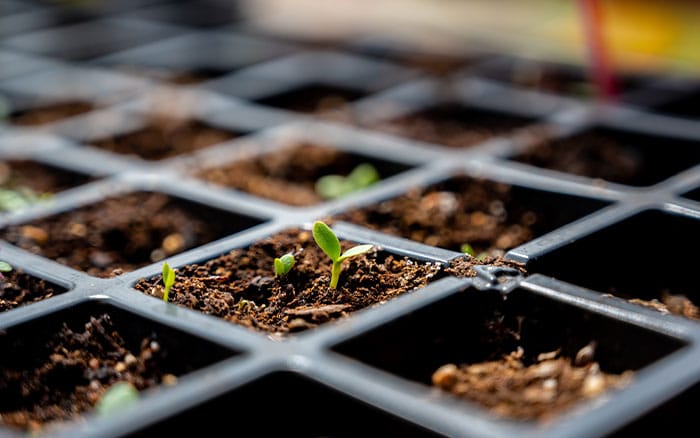July is a time of the year when the first flush of early flowering summer plants has finished. And later flowering plants like dahlias and cannas are getting ready to make their appearance.
What are biennial plants?
Fruit and vegetable plants are growing away nicely. This makes July the perfect time to sow seeds of biennial plants like foxgloves, wallflowers, and forget-me-nots.
Biennials are plants with, generally speaking, a two-year life cycle. They grow in the first year of sowing and flower in the second year.
Sowing seed now means that they will germinate quickly, growing young leaves and stems before winter. At which point they hunker down until spring the following year when they spurt into growth and flower. This is when the weather conditions are right.
Once established in your garden, biennials such as foxgloves, forget-me-nots and honesty will often happily self-seed around your garden. This is without you having to sow fresh seeds every year.
How to sow biennial seeds
The easiest way to sow the seeds is to take a shallow seed tray, fill it with general-purpose, peat-free compost, and scatter the seeds on top.
Try to space the seeds evenly apart.
As this will make it easier for you to either grow them in modules or plant out directly into the garden during late summer/early autumn.
This enables the plants to get their roots established before the onset of harsh winter months.

What are the best biennials to sow in July?
Lunaria annua (Honesty)
Honesty is a brilliant biennial choice. Looks fabulous growing amongst tulips and wallflowers and makes great cut flowers, lasting at least seven days.

Germination is quick; around ten days, and then fourteen days after that is the best time to prick them out.
Then move the young seedlings into individual modules before planting them outside in either a sunny or shady location.
And with a bit of luck, they should gently seed themselves around the garden in the years that follow.
The other good news about this plant is that if you pick the flowering stem leave a couple of leaves on the remaining stem.
The plant should re-grow and re-flower again that same season.
Erysimum (Wallflowers)
Can be sown outside into a seedbed as well as indoors in the same way as Honesty seeds. They germinate quicker than Honesty but, being a member of the brassica family, can be targeted by flea beetles.
They get their name from the fact that they hop around like fleas! Although they don’t kill the seedlings, they pepper the leaves with tiny holes. This slows down growth as there’s not such a large area of leaf left to properly photosynthesise.
Fortunately, an easy way to keep flea beetles at bay is to cover the planted seeds with horticultural fleece.
And keep the fleece over the top of the growing crop until mid-August when the flea beetle miraculously disappears!
There are many different varieties of wallflowers to choose from, including the Giant series which grow well in shade.
It’s an especially good idea to sow wallflower seeds now if you want to grow single-colour varieties.
As plants of these are generally not so available as the mixed colour varieties in the autumn.

Digitalis (Foxglove)

Foxgloves create great vertical accents in the garden when in flower and are another easy-to-grow biennial.
It is available in white and shades of apricot as well as the more familiar wild purple colour.
Sow them between June and August so they are ready to plant out in the spring. This will promise a lovely display between May and July.
If you want your foxgloves to self-seed and flower every year, they will need planting two years in a row.
Hesperis matronalis (Sweet rocket)
Another biennial plant producing very tall flower stems is Sweet Rocket which flowers in either pink or white and in addition is delightfully scented.
It’s another easy plant to grow, being happy in full sun or part shade.
But it will need staking to support its tall stems.
It is a greatly beneficial plant to local wildlife. It attracts bees, beneficial insects, butterflies and moths, and other pollinators. It also provides food for caterpillars.

Sowing biennials means you can rely on your garden to keep coming back to life with colour and beauty. By sowing your biennials now, you can enjoy the wonderful results in the future.

Leave A Comment